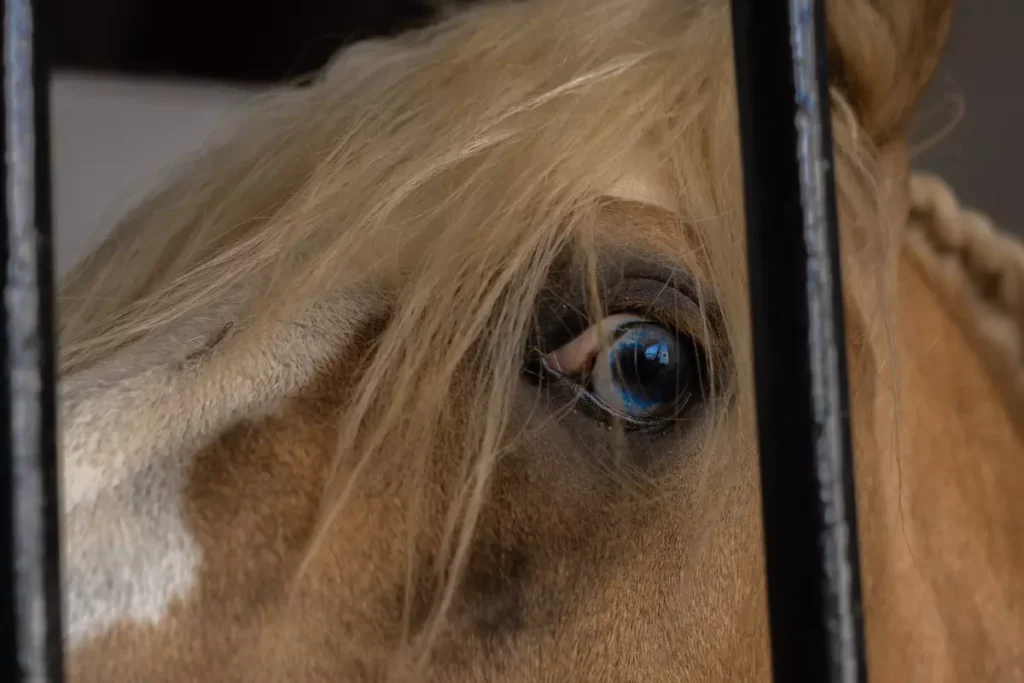Federal bills in the Senate and House come after Center for a Humane Economy and Animals’ Angels Investigation Exposed Rampant, Unrelenting Cruelty to Horses in Slaughter Pipeline
Washington, D.C. — Senators Robert Menendez, D-N.J., and Lindsey Graham, R-S.C., introduced anti-horse slaughter legislation late this week, on the heels of a joint investigation and analysis released early this year by the Center for a Humane Economy, Animal Wellness Action, and Animals’ Angels that exposed that the extraterritorial slaughter of American horses is rapidly waning but still a merciless journey for around 20,000 American horses.
Other original cosponsors include Sheldon Whitehouse, R-R.I., Susan Collins, R-Maine, Dianne Feinstein, D-Calif., Marco Rubio, R-Fla., Richard Blumenthal, D-Conn., John Kennedy, R-La., Cory Booker, D-N.J., and John Fetterman, D-Penn.
A House bill was introduced in May by Reps. Vern Buchanan, R-Fla., and Jan Schakowsky, D-Ill. The Senate bill is S.2037 and the House bill is H.R. 3475. And earlier this week, Animal Wellness Action applauded lawmakers in Congress for approving provisions in the annual federal agriculture and FDA appropriations bill to prohibit USDA inspections for horse slaughter.
“The good news is that foreign demand has cratered for the North American horse slaughter industry and horse slaughter has been in free fall for the last decade,” said Wayne Pacelle, president of the Center for a Humane Economy. “Yet our recent investigation found that there can be no worse option for a horse than to be obtained by kill-buyers and then to go on a journey to slaughter characterized by terror, injury, and butchery — all for meat that nobody needs and very few want.”

The report revealed that horses used in racing, show rings, work for police or on farms, and even as companions are opportunistically obtained by “kill buyers,” kept in bare-minimum survival conditions at holding facilities, and transported as standing cargo in trucks jam-packed with frightened and desperate animals. Then, with their eyes wide as saucers, the horses are butchered at slaughter plants in Canada and Mexico. With no markets for horse meat in North America, the slabs of meat are destined for small and shrinking pockets of foreign markets in China, Italy, Japan, Russia, and a few other nations. The number of American horses destined for slaughterhouses has gone from 350,000 in 1990 to 140,000 in 2007 to 20,000 in 2022.
“I am delighted my former Senate colleague, Bob Menendez and Lindsey Graham, are fighting to end the barbaric practice of horse slaughter in the United States,” said former Senator Mary Landrieu, D-La., now a consultant with Animal Wellness Action. “When I carried this legislation, we had enormous bipartisan support in Congress and that support exists even more today. Time to get it over the finish line.”
“The report finds that the instant a horse is designated a ‘kill horse,’ handling and treatment deteriorate from horses previously treated as companions or working animals,” added Scott Beckstead, director campaigns for the Center for a Humane Economy. “We are grateful to Senators Menendez and Graham for leading the effort to attach this measure to the Farm bill.”
Because of potentially lethal drug residues in horse meat, given their backgrounds as companions, working animals, racehorses, and pleasure horses, the European Union banned the import of all horse meat from Mexico (amending Decision 2011/163/EU) in December 2014. In October 2016, EU Regulation 2016/1832 was implemented, which includes a provision requiring that all horses from the United States be kept in a Canadian feedlot for six months prior to slaughter, and that a monitoring system be put into place to track residues and substances referred to in Annex I to Directive 96/23/EC.
Combined with greater awareness of food safety problems and animal cruelty concerns, foreign demand has decreased, especially in Europe.
Killing and butchering horses for human consumption was halted in the United States in 2007 through a series of legislative and judicial actions and has not resumed, but no similar national rules apply in Canada or Mexico.
“The industry is driven not by any sort of concern for a ‘surplus’ of American equines or a caring or even practical instinct to find a population equilibrium for our domestic population, but by the opportunistic collection of horses by kill buyers in the United States and by a diminishing foreign demand,” said Jim Keen, D.V.M., Ph.D., the director of veterinary science for the Center for a Humane Economy.
“To suggest that the horse slaughter industry is, in any way, providing an important safety valve in controlling captive horse populations is akin to claiming that random acts of violence by street gangs are contributing to human population control,” added Pacelle. “The killing, at present levels, has a negligible continent-wide effect on population size, and its practices are as coarse and cold-blooded as they come.”

